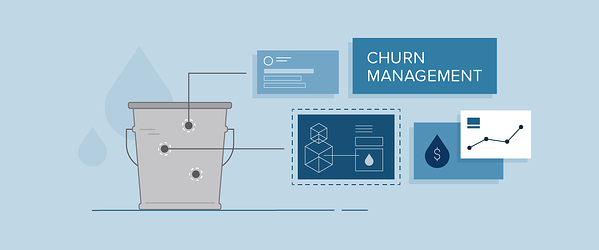Keep more subscribers: Dunning process best practices

In today’s blog, we’re continuing our discussion about dunning. As a reminder, dunning is the process of communicating with customers (usually by email) to try to collect payments due. In effect, discussions about dunning are really discussions about these customer communications.
In our last blog, we described how the dunning process works at each step and the decisions the merchant can make which can optimize the process and improve results. We also outlined how Recurly’s dunning process is more effective.
Why separate the dunning and retry process
Many of our competitors process retries and send customer emails at the exact same time. However, this does not allow each process to be optimized. Recurly has separated the two processes because we know that different industries experience very different rates of churn. Decoupling these processes and optimizing each one is a more effective way to reduce churn by increasing transaction success rates.
Instead of retrying credit cards at the same time as subscriber emails are sent, we use sophisticated logic based on our past experience to determine when payment retries are most likely to result in success. This improves our transaction success rate, and it also gives our customers control over when their subscribers are contacted about payment issues.
Dunning process best practices
Having a dunning process that operates separately from other recovery activities is a best practice that only Recurly offers. In addition to this unique Recurly capability, what are other best practice related to dunning?
Make it highly tailored to your business and consider your brand. Be strategic with how you set up your dunning. What’s important to you? For example:
Do you want to maximize for revenue? In other words, do you want to maximize for all of the invoices you could possibly collect? If so, you should go with a longer dunning cycle.
Do you want to minimize for time to collect? This can be relevant if you have operating costs that depend upon the length of time that you provide service to customers. If so, then you’d want a shorter dunning cycle with more frequent emails earlier in the cycle.
Set up your ideal dunning settings. We do not recommend dunning cycles longer than 28 days for monthly plans. A dunning period longer than 28 days causes invoices to get into a “loop” state where a new invoice is issued even though the prior invoice was not collected.
We DO recommend that you send multiple email during the dunning process, as this gives customers multiple reminders to update their payment information.
Customize customer communications:
Set up a return email addres that accepts replies, like hello@yourdomainname.com. This way, if customers reply, you can acquire their email address and will also make the email feel less anonymous.
Customize your emails to match your branding and the voice of your marketing team. This is a best practice for improving open and clickthrough rates. Recurly offers HTML and text editing that allow you to:
Customize and revise the message in each email. Don’t repeat the same email—it will lose its impact. Instead, make each email increasingly direct in tone to indicate that there’s a time factor in their response.
Directly convey urgency later in the process with messages like, “Your service will be cancelled soon” or “Your service will be shut off TOMORROW.”
Have a clear call to action for your subscribers.
Measure the effectiveness of this campaig over time using our Recovered Revenue Report and our Dunning Effectiveness Report, both found in Recurly Analytics.
If you are a Recurly customer and would like to view and edit your Dunning settings, you can do so here.
What should you do at the end of the dunning cycle?
There are two important choices to make at the end of the dunning cycle: whether you leave the invoice open and whether you cancel the subscription if the invoice is never paid.
Leaving the invoice open allows customers to come back and pay for the invoice later. If you have a digital product this may not be the best option as your customers can continue to use your product for free.
Auto-cancelling the subscription is a best practice for SaaS applications and digital products in the B2C space. In the B2B category, however, some companies prefer to let the subscription continue and the invoice remain unpaid. Allowing the subscription to continue is a show of good faith and provides an opportunity for your sales force to re-engage with the subscriber and win them back.
The bottom line
Dunning is a key process for maximizing revenue, and it’s effective because the messaging comes directly from the subscription business. But there is no one strategy that can guarantee the results you want. Recurly offers a multitude of very flexible tools to help you develop and manage your dunning strategy. For more information, view our documentation on Dunning Management.
In addition, Recurly provides other tools and methods to help you maximize your revenue, such as our Account Updater feature and our proprietary retry logic. If you’re a Recurly customer, we show how much revenue Recurly has recovered for you that month on every invoice.
And check out these other resources:
In our next blog, we’ll take a look at how to measure your dunning effectiveness and how to A/B test different dunning strategies. Be sure to check back!


